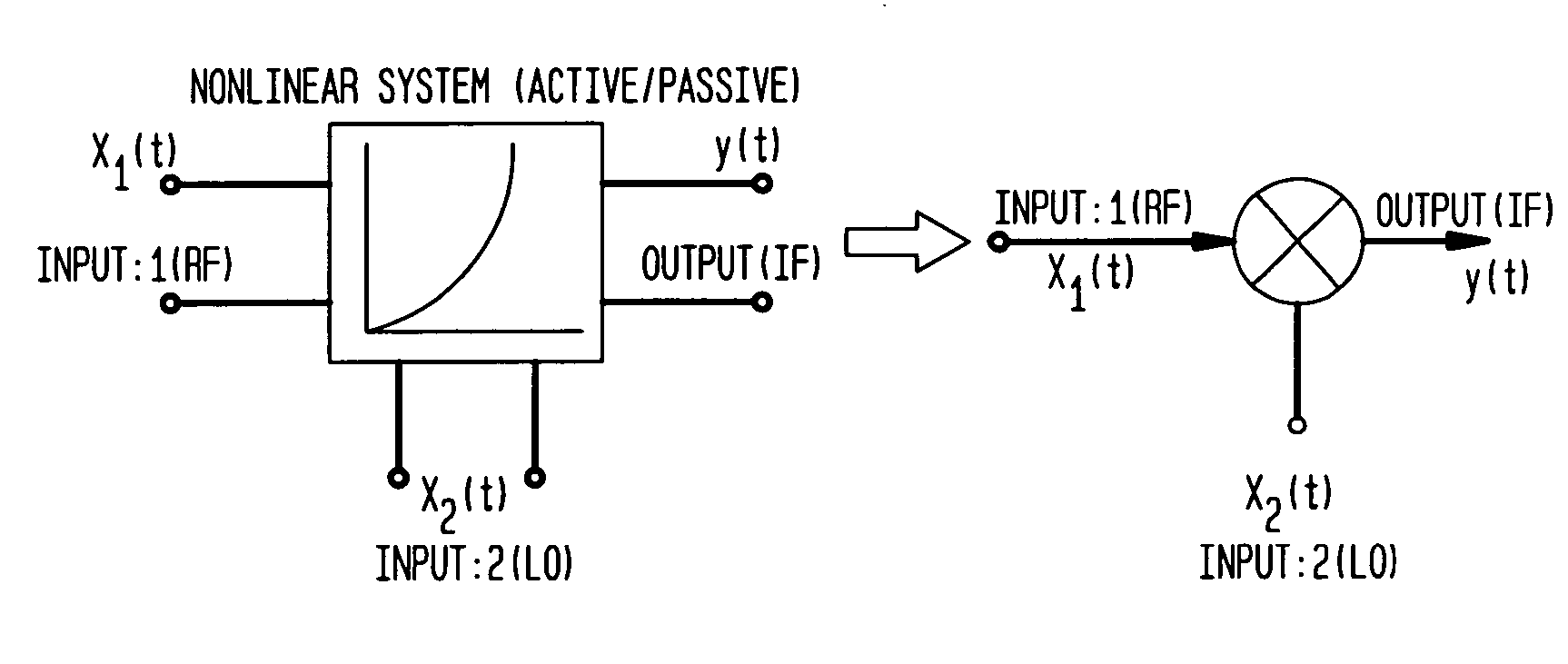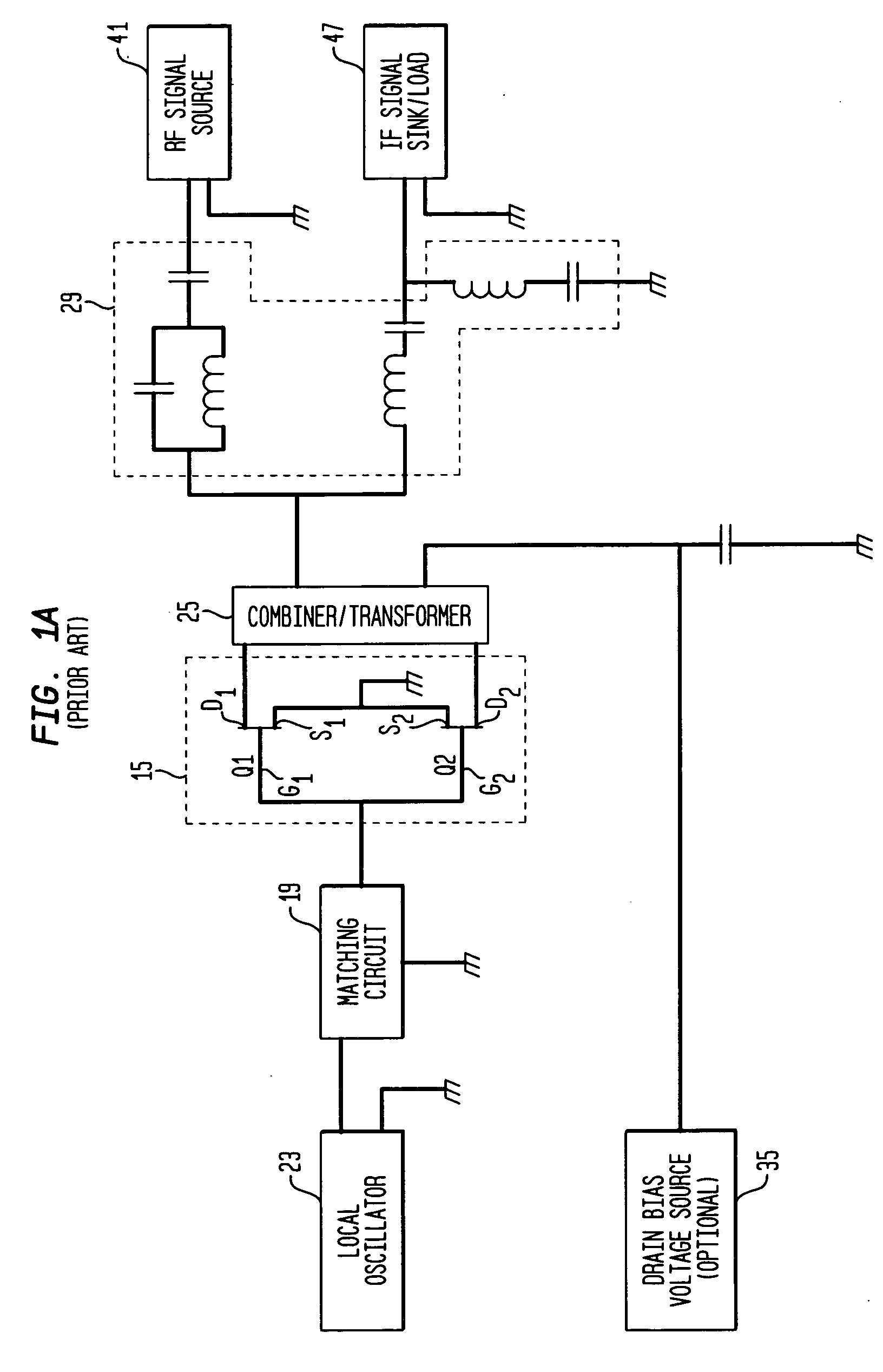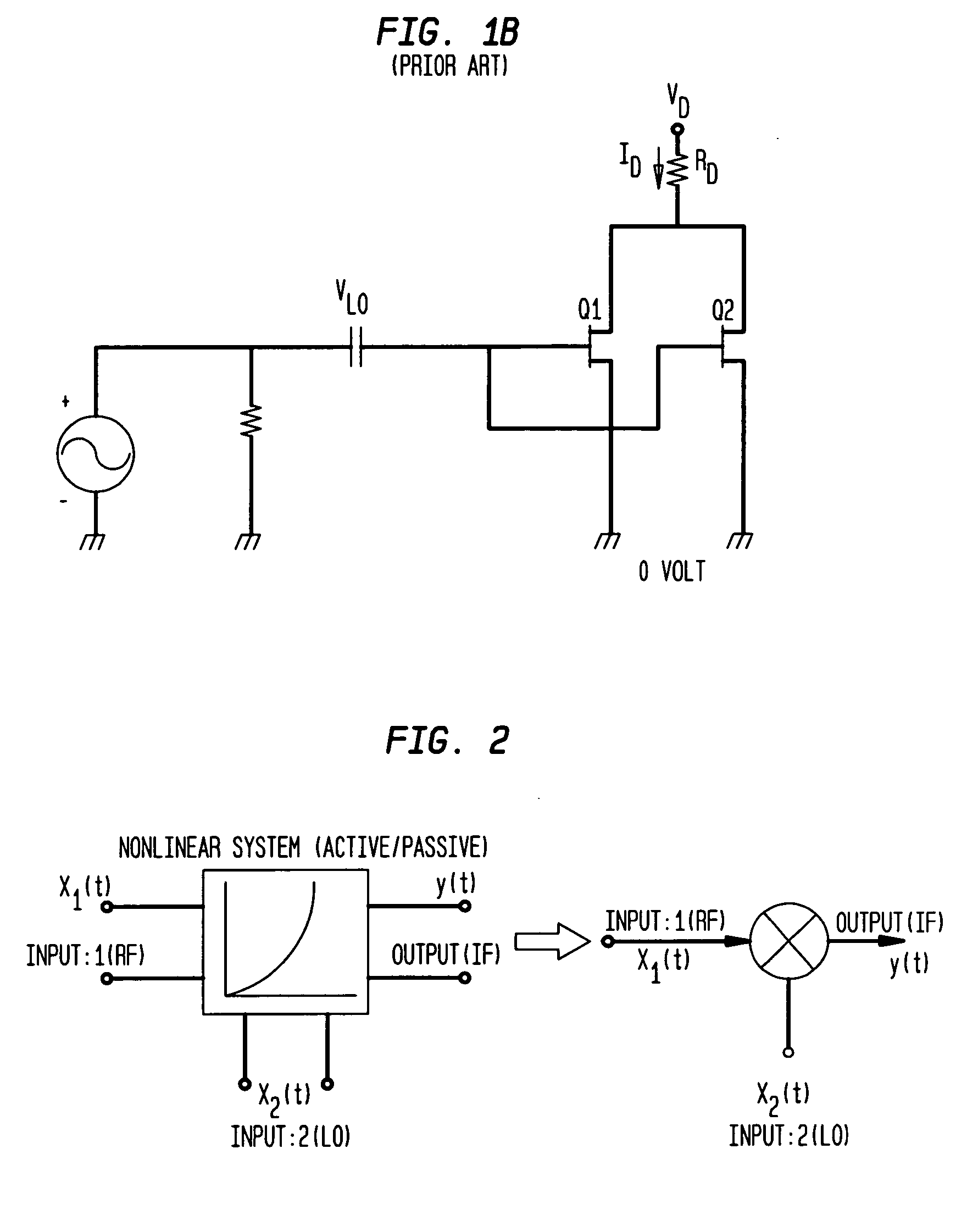Passive reflection mixer
a reflection mixer and mixer technology, applied in the field of mixers, can solve the problems of low linearity and noise figure, low conversion loss or even gain, and the radio frequency receiver typically receives a growing number of unwanted signals at undesired carrier frequencies, so as to improve the high dynamic range, reduce the level of non-linearity and intermodulation distortion, and improve the effect of low distortion
- Summary
- Abstract
- Description
- Claims
- Application Information
AI Technical Summary
Benefits of technology
Problems solved by technology
Method used
Image
Examples
Embodiment Construction
[0064] Even though a mixer works by means of an amplitude-nonlinear behavior in the active device(s), it is generally desired (and expected) that the active device(s) operate as a linear frequency shifter. The degree to which the frequency-shifted signal is attenuated or amplified is an important mixer property. In that regard, the linearity performance of a mixer may be evaluated in terms of its third order intercept point (IP3). In addition, conversion gain can be positive or negative; usually by convention, negative conversion gain is often stated as conversion loss.
[0065]FIG. 2 shows a model for the system response of a nonlinear network / circuit that is used to establish a relationship between gain compression and an intercept point of a mixer circuit having two inputs, x1(t) and x2(t) in accordance with an aspect of the present invention. In FIG. 2, the system response of the nonlinear network / circuit is illustrated with two inputs, an RF (radio frequency) input and a LO (loca...
PUM
 Login to View More
Login to View More Abstract
Description
Claims
Application Information
 Login to View More
Login to View More - R&D
- Intellectual Property
- Life Sciences
- Materials
- Tech Scout
- Unparalleled Data Quality
- Higher Quality Content
- 60% Fewer Hallucinations
Browse by: Latest US Patents, China's latest patents, Technical Efficacy Thesaurus, Application Domain, Technology Topic, Popular Technical Reports.
© 2025 PatSnap. All rights reserved.Legal|Privacy policy|Modern Slavery Act Transparency Statement|Sitemap|About US| Contact US: help@patsnap.com



